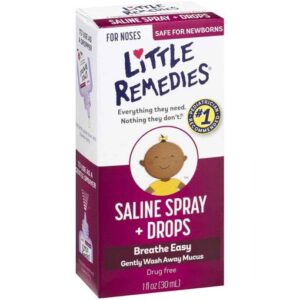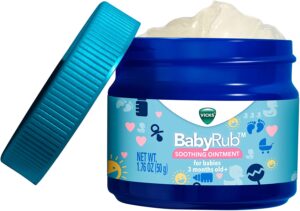Archive for April, 2022
Navigating Allergy Season. By Our Student Pharmacist, Madison Price.
What are allergies and why do people have allergies?
Constantly sneezing, nasal congestion, and a runny nose are commonly experienced allergy symptoms.
Did you know that allergies are our bodies overreaction to something that would normally not cause a response?
Our immune system responds to allergy triggers by releasing a chemical known as histamine. Histamine is what causes symptoms such as sneezing, a runny nose, nasal congestion, itchy, dry eyes, or postnasal drip. Allergens cause our bodies to release histamines and produce allergies.
For some individuals, allergies may be present year-round or occur during certain seasons. If you have year-round allergy symptoms, you could be allergic to pet dander, mold, or dust mites inside and outside the home. An example of seasonal allergens includes pollen or ragweed, that are prominent in the spring and fall.
What are the treatment options for allergies?
There are two methods to prevent and treat allergy symptoms: avoid the allergen or lower the body’s response to the allergen.
In the home, using a dehumidifier will work to keep the nasal passages moist and adding High Efficiency Particle Air (HEPA) filters will filter pollen, mold, bacteria and other circulating airborne particles.
When outside during high pollen counts, avoid touching your eyes to prevent additional irritation. Upon returning inside, change clothing or bathe to remove any pollen from the skin and hair.
For some allergy sufferers, it can be difficult to avoid the allergen altogether. Luckily, there are a variety of over-the-counter products for seasonal and year-round allergies.
Searching the allergy aisle can feel overwhelming. There are so many options. Which one should you purchase? Allergy medications come in a variety of formulations including intranasal sprays, oral antihistamines, oral decongestants, and eye drops.
Intranasal Corticosteroids
- Examples
- Flonase (fluticasone propionate) – ages 4 and up
- Flonase Sensimist (fluticasone furoate) – ages 2 and up
- Nasacort (triamcinolone) – ages 2 and up
- Rhinocort (budesonide) – ages 6 and up
- What symptoms do these medications help?
- Congestion, runny nose, sneezing, itchy, watery eyes
- When/how to use:
- Moderate to severe year-round allergies or start using prior to the beginning of seasonal allergies. Intranasal corticosteroids need to be in your system before allergen exposure to provide relief. These are not ideal for allergic episodes.
Oral Antihistamines
- Examples
- 1st generation – chlorpheniramine, diphenhydramine (Benadryl), doxylamine, meclizine
- Side effects- drowsiness, dry mouth
- 2nd generation – cetirizine (Zyrtec), loratadine (Claritin), fexofenadine (Allegra), levocetirizine (Xyzal)
- Side effects – some drowsiness with cetirizine, but overall well tolerated.
- What symptoms do these medications help?
- Oral histamines treat the same symptoms as intranasal corticosteroids but to a lesser extent.
- When/how to use:
- Mild symptoms with allergy episodes or seasonal allergies
- 1st generation – chlorpheniramine, diphenhydramine (Benadryl), doxylamine, meclizine
Oral decongestants
- Examples
- Sudafed
- Sudafed PE
- What symptoms do these medications help?
- Congestion and sinus pressure
- When/how to use
- Best used when your allergies are bad and congestion remains despite trying other medications. Sudafed and other combination products are kept behind the counter at the pharmacy and require an ID to purchase. Additionally, they can cause increases in blood pressure and heart rate, so individuals with these conditions should use caution when taking them.
Miscellaneous Allergy Medications
Ocular antihistamines
- Example
- Ketotifen (Zatidor)
- What symptoms are helped?
- If your allergy symptoms are mainly red, itchy, watery eyes
Nasal decongestants
- Example
- Oxymetazoline (Afrin)
- What symptoms are helped?
- Nasal congestion
- When/how to use
- These can be great for nasal congestion, but it’s important to know they can only be used for three days before taking at least a five day break before restarting. If used longer than three consecutive days, these products can cause “rebound congestion” which may be harder to treat than the original congestion you experienced.
As you can see, there are many over-the-counter options to treat allergies. The best option for you depends on your symptoms, how long you’ve been experiencing symptoms, and your past medical history. It’s also very important to stay consistent once you’ve selected a medication in order to see results.
Feel free to stop by Happy Druggist or give us a call with any questions you may have about allergy medications!
References:
https://www.aafa.org/media/3278/aafa-2022-allergy-capitals-report.pdf
https://www.cdc.gov/climateandhealth/effects/pollen-health.htm
https://www.cdc.gov/climateandhealth/effects/allergen.htm
https://www.aafa.org/allergies.aspx
Treating Cough & Cold Symptoms in Children Under 2-Years-Old. By Our Student Pharmacist, Elaine Sim.
Watching a baby struggle to breath through a congested nose or feeling a tiny body hot to the touch from a fever can make any parent worry.
During my pharmacy internship at Nationwide Children’s Hospital, many parents inquired about appropriate over-the-counter (OTC) cough and cold products for infants and young toddlers. They typically asked whether or not they could give their children decongestants, antihistamines, cough suppressants, and cough expectorants.
Oftentimes, I told them that the Food and Drug Administration (FDA) strongly recommends against using OTC cough and cold medications in children less than two-years-old due to life-threatening side effects. In fact, many manufacturers even set the age cut-off on their labels at four-years-old. According to the FDA’s adverse event reporting program, MedWatch, some cold and cough products have been associated with death, seizures, rapid heart rate, and decreased levels of consciousness in babies.
As you peruse the cough and cold aisle in pharmacies, you will see that many products are only indicated in children two years and older. So what can you do for a four month old or one-year-old child?
There are a few OTC products that may be used in children less than two-years-old. These products include pain relievers/fever reducers and saline nose drops/sprays. There are no OTC products that relieve cough for this age group, though coughing is less common in babies.
Below you will find a list of appropriate home remedies and OTC products.
Cool mist humidifier: Cool mist can help decrease congestion in the nasal passages. Try to avoid warm mist as it can cause swelling in the nasal passages and make breathing more difficult. Warm humidifiers can also cause burns on delicate skin.
Saline nose drops or sprays: Saline solutions keep nasal passages moist and decrease congestion. Avoid nasal drops that say “decongestant” on them as these contain phenylephrine and should not be used in children less than two-years-old.
Hydration: It is important for children to drink plenty of fluids, mainly water.
Nasal suctioning with bulb syringe: Bulb syringes may be used to suction out mucus. Applying three to four saline drops in each nostril before suctioning can help thin out mucus that is too thick to suction. Limit suctioning to four times a day to avoid nose irritation.
Pain relievers/fever reducers: Consult your child’s pediatrician before use.
Infant acetaminophen (Tylenol) or ibuprofen (Advil) are approved in babies less than two years and are both dosed by weight. The concentration of Tylenol is 160 mg per 5 mL and the concentration of Advil is 50 mg per 1.25 mL. You can use the weight-based dosing on the package insert of the products or you can ask your pharmacist for more guidance.
We recommend a therapeutic Tylenol dose of 10 to 15 mg/kg/dose and Advil dose of 5 to 10 mg/kg. For younger children, it is a good idea to space Tylenol doses every six hours and Advil every eight hours.
Note: There is a children’s chewable tablet that comes as a 160 mg dose. This should not be used in children less than two.
Homeopathic products are not FDA approved and should be used with caution as some may contain active ingredients that actually exceed the amount stated on the product label.
Vicks BabyRub is an aromatic ointment that has been used to soothe fussy babies, but will not help with congestion or cough. Unlike both children’s and adult’s VapoRub, BabyRub does not contain menthol and camphor or any other active drug ingredient. Instead, BabyRub consists of eucalyptus, rosemary, lavender, aloe vera, petrolatum, coconut oil, and mineral oil. BabyRub may be massaged onto the chest, neck, back, and soles of the feet of babies above the age of three months. It should not be applied anywhere on the face, near the mouth, in the nostrils, or on broken skin. It is also important to avoid contact with eyes.
I have met many parents who use this product and report minimal side effects. While this product is relatively safe, parents should watch out for accidental ingestion (e.g. when baby places foot in mouth), skin irritation, and applying to hot skin as this can increase absorption.
Things to Avoid:
DO NOT GIVE HONEY. While honey is used to soothe a sore throat and relieve a cough in older children and adults, it should NOT be used in children less than one-year-old because of the risk of infant botulism. Infant botulism is caused by a toxin produced by Clostridium botulinum bacteria found in soil and dust. The bacteria is also known to contaminate honey and some corn syrups.
Symptoms of infant botulism include:
- muscle weakness
- poor feeding
- weak cry
- constipation
- “floppiness” or decreased muscle tone
As kids get older, their digestive system will mature and eliminate the bacteria from the body before it causes harm.
DO NOT GIVE OTC PRODUCTS THAT CONTAIN ALCOHOL. Some OTC products for young children ages 6-12 can contain up to 5% alcohol. Alcohol can impair the ability of infants to breath on their own and can also increase the risk of seizures.
DO NOT GIVE OTC PRODUCTS THAT CONTAIN ASPIRIN. In young children, aspirin is associated with Reye’s Syndrome, a life-threatening condition characterized by brain and liver damage.
When to Call the Pediatrician:
- OTC products do not relieve symptoms or symptoms worsen after 24 hours.
- Your child is having a hard time breathing and makes wheezing or grunting noises.
- Your child has ear pain and pulls their ears or rolls their head from side to side.
- Your child has difficulty feeding or refuses feeding.
- Your child appears very pale or gray/blue.
- Your child is not “acting right.”
- Less than 2 months old: rectal temperature above 100.4 °F
- Less than 2 years old: rectal temperature above 102 °F or a forehead, armpit, or ear temperature above 103 °F
Note: Rectal temperatures are preferred in infants and toddlers. Oral temperatures are not recommended in children less than four-years-old. It is hard for younger children to keep the thermometer fully under their tongue for long enough. Forehead strips change color to show temperature, but are the least accurate method.
Always carefully read product labels to ensure a medication is safe to use in your child. If you have any doubts or questions, never hesitate to ask your pharmacist or doctor for help!
References:
- Cough and cold medicine over-the-counter (OTC). Helping Hands. https://www.nationwidechildrens.org/family-resources-education/health-wellness-and-safety-resources/helping-hands/cough-and-cold-medicine-over-the-counter-otc. Published January 1, 2019. Accessed April 22, 2022.
- FDC warns against use of OTC cough/cold products in young children. Child & Adolescent Health Specialists. https://www.childhealthspecialists.com/index.php/fdc-warns-against-use-of-otc-cough-cold-products-in-young-children. Published 2008. Accessed April 22, 2022.
- Should You Give Kids Medicine for Coughs and Colds? U.S. Food and Drug Administration. https://www.fda.gov/consumers/consumer-updates/should-you-give-kids-medicine-coughs-and-colds. Published October 28, 2021. Accessed April 22, 2022.
- Temperature Measurement. https://www.ucsfbenioffchildrens.org/medical-tests/temperature-measurement. Published June 16, 2021. Accessed April 22, 2022.
Fun in the Sun. By Our Student Pharmacist, Madison Price.
It’s beginning to warm up and that means spending more time outdoors. Spending time outside is a great way to eliminate stress and get some vitamin D. During this time, it is especially important to protect your skin from excess sun exposure.
The sun emits two forms of radiation: UVA and UVB rays.
UVA ray exposure contributes to premature skin aging and sun damage such as wrinkles, sagging, and leathery skin.
UVB rays are more responsible for sunburns.
Easy ways to prevent UV damage to your skin barrier include:
- wear protecting clothing
- apply/reapply sunscreen
- avoid being outdoors when the UV rays are at their strongest (between the hours of 10 am to 4 pm).
UV Protection Basics
For starters, reduce your risk of sun damage by spending time outdoors under an umbrella or in a shaded area. Additionally, use protective clothing such as a wide brimmed hat with long sleeves and long pants if possible. If long sleeved clothing isn’t an option, be sure to pack a t-shirt or a cover up for your next trip to the beach. Don’t forget to wear sunglasses to protect your eyes.
Let’s Talk Sunscreen
There are an abundance of sunscreen products available today. SPF 15, 30, 45, 100!
What exactly does this mean?
SPF stands for sun protection factor and works by extending your skin’s natural barrier against the sun’s rays. For example, an SPF 15 sunscreen would provide approximately 15 times more sun protection than your body without sunscreen. A broad-spectrum sunscreen with at least SPF 30 is a good start and covers both UVA and UVB rays.
Keep in mind, sunscreen does wear off over time with sweat and water from the pool or ocean. It is important to reapply sun protection every two hours after swimming, sweating, or toweling off.
There are a variety of sunscreen products available, some formulated for the face and body.
Sunscreen can be divided into two main categories, physical and chemical sunscreen.
So what’s the difference between the two?
Chemical sunscreens have organic compounds such as avobenzene, octobenzene, and octocrylene that act as a sponge, absorbing UV rays so your skin doesn’t have to. These products are often easy to apply and do not leave a white cast. Individuals with sensitive skin may experience occasional redness or irritation with chemical sunscreens.
Physical or mineral sunscreens include inorganic compounds such as zinc oxide and titanium dioxide that serves as a barrier to reflect harmful UVB rays. Physical sunscreens may be white in color, may require longer time to rub into the skin, and may leave a white cast on individuals with a darker complexion. Today, there are some physical sunscreens with tinted zinc oxide that eliminate that white cast.
How to Apply Sunscreen
Apply sunscreen at least 15 minutes prior to sun exposure to allow the product ample time to blend into the skin. The average adult needs approximately one ounce of sunscreen for their entire body, or the equivalency of a shot glass to cover the body head to toe. Don’t forget the ears, nose, lips (there are several lip balm brands with SPF available), back of the neck, and the top of the head in balding individuals.
Did you know that certain medications make your skin sensitive to the sun? A few medications include:
- Accutane
- Retinol
- Bactrim
When using these products and medications, always remember to apply sunscreen!
References
https://www.cdc.gov/cancer/skin/basic_info/sun-safety.htm
https://www.cdc.gov/cancer/skin/sunsafeselfie/index.htm
https://www.healthline.com/health/physical-vs-chemical-sunscreen
https://www.healthline.com/health/what-spf-should-i-use#understanding-spf
Dry Eye. By Our Student Pharmacist, Elaine Sim.
Dry eye is a common condition in older adults and can become a chronic issue for many people. Fortunately, there are both lifestyle changes and medications that can help relieve this problem.
Dry eye occurs when people do not make enough tears or do not produce quality tears. Tears consist of oil, water, and mucus and all of these components work together to nourish and protect the surface of the eye. Oil prevents the water in the tears from evaporating, and mucus allows for the tear to spread evenly across the eye.
Symptoms of dry eye include:
- Red eyes
- Gritty or scratchy feeling in eye
- Burning or stinging sensation in eyes
- Blurred vision
- Sensitivity to light
Common causes of dry eye include:
- Age: As people age, tear production decreases. Many people over the age of 65 experience dry eye.
- Gender: This condition is more common in females. Hormonal changes brought on by pregnancy, oral contraceptives, and menopause can cause dry eye.
- Contact lenses wearer or history of refractive surgery
- Inflammation or structural problems of the eyelid
- Deficiencies in vitamin A (e.g. carrots, broccoli) and/or omega-3 fatty acids (e.g. fish, nuts)
- Chronic illness (e.g. diabetes, Parkinson disease, Sjorgren’s syndrome)
- Eye surgery
- Over-use of eye drops with preservatives
- Excessive time looking at phone or computer screens and blinking less often
- Direct sun exposure to eye, low-humidity, cold weather, wind, smoke, and air conditioning can cause tears to evaporate too quickly or be irritating to the eye
- Lack of sleep
- Medications: Below are some classes and examples of drugs that may contribute to dry eye. If you are experiencing dry eye, a pharmacist can look through your medication list to see if there are any potential culprits!
- Antihistamines (e.g. Benadryl, Claritin)
- Anticholinergic medications (e.g. benztropine, glycopyrrolate)
- Decongestants (e.g. Sudafed, Afrin nasal spray)
- Blood pressure medications (beta blockers)
- Antidepressants (e.g. paroxetine, nortriptyline)
- Oral acne medication (e.g. Accutane), GERD medications (e.g. Prevacid, Prilosec)
- Hormone replacement therapy and birth control (e.g. estrogen and/or progesterone)
- Chemotherapy medications
Complications of dry eye include:
- Eye infections: Tears protect the eye from infection.
- Eye damage: Untreated, severe dry eye can lead to inflammation, corneal ulcers or abrasion, and vision loss.
- Decreased quality of life: Dry eye can be painful and bothersome. It can make performing daily activities, like reading, less enjoyable.
Treatments for dry eye include:
- OTC eye drops: There are multiple eye lubricating products in the form of artificial tears drops (preservative or preservative-free), gel, or ointment. Try to avoid eye drops that reduce redness as these contain ingredients that can cause more irritation to your eyes over time. Your local pharmacist can help you identify which formulation and ingredients might be favorable for you. It is important to know how to apply these products and how many times a day you can apply them.
- Some examples of the many eye drops on the market are:
- Systane
- Refresh Tears
- Visine Tears.
- Some examples of the many eye drops on the market are:
- Prescription medicines (e.g. Xiidra, Restasis, Lacrisert, Isopto Carpine) may be utilized if OTC eye drops do not work.
- Warm compresses and/or eye masks: These can help clear blocked oil glands in the eye and provide relief to painful eyes. You can fold a warm, clean face towel and place it over your closed eyelids for 5 minutes.
- Lifestyle changes:
- Try to avoid having air blow directly into your eyes (e.g. heater, air conditioner, fan). Using a humidifier at home may help too.
- Look away from computer screen every 20 min and blink repeatedly for a few seconds or close your eyes for a short time. Position your computer screen below eye level so you don’t have to open them as wide to look at the screen.
- Wear eye protection when outside to prevent your eyes from the sun and wind.
- Consider vitamin A and fish oil supplements.
- Stop Smoking. Smoke exposure can make dry eyes worse.
- Blood serum drops: If you have severe dry eye that does not respond to any other treatments, some clinics will take a sample of your own blood and remove the red blood cells to create serum eye drops.
- Surgery: Eyelid surgery is the last resort. An ophthalmologist can place tiny silicone plugs in your tear ducts to prevent tears from draining from your eye too quickly. An ophthalmologist can also change the shape of your eyelids so that they close all the way during blinking and sleeping.
Make sure to blink a few times and rest your eyes after reading this article!
References:
Dry Eye. National Eye Institute. https://www.nei.nih.gov/learn-about-eye-health/eye-conditions-and-diseases/dry-eye. Published April 8, 2022. Accessed April 15, 2022.
Dry Eyes. Mayo Clinic Patient Care & Health Information. https://www.mayoclinic.org/diseases-conditions/dry-eyes/symptoms-causes/syc-20371863. Published September 24, 2020. Accessed April 18, 2022.
Dry Eye Symptoms – Optometrist: Optical shop. Optometrist | Optical Shop. https://www.malayaoptical.com/dry-eye-symptoms/. Published October 23, 2020. Accessed April 15, 2022.
Fetal valproate syndrome. NORD (National Organization for Rare Disorders). https://rarediseases.org/rare-diseases/fetal-valproate-syndrome/. Published May 21, 2020. Accessed April 10, 2022.
Surgery for dry eyes: Types & when it’s necessary: NVISION. NVISION Eye Centers. https://www.nvisioncenters.com/dry-eyes/surgery/. Published December 1, 2021. Accessed April 15, 2022.
April 19 is National Garlic Day. By Our Student Pharmacist, Madison Price.
Did you know that April 19 is National Garlic Day!
This fragrant, flavor enhancer has some great health benefits. Garlic is widely consumed across many cultures for culinary and medicinal benefit. In fact, the earliest garlic consumption dates back thousands of years to China and Central Asia. The chemicals that give garlic its pungent smell and flavor include allicin, ajoene, and compounds such as S-allyl-L-cysteine. Allicin, one of the more studied garlic components, is produced when the cloves are crushed or chopped and gives raw garlic its spicy taste.
Here are a few of the many health benefits of garlic:
- Vitamin Rich – one raw clove of garlic contains many nutrients including manganese, vitamin B6, vitamin C, and selenium.
- High Blood Pressure – garlic has been found to help reduce high blood pressure by causing vasodilation, or relaxation of blood vessels to promote blood pressure lowering.
- Cholesterol – garlic has demonstrated cholesterol lowering effects, particularly reducing LDL, sometimes referred to as “bad” cholesterol and total cholesterol by 10 to 15%. Triglycerides are another form of cholesterol that contributes to heart disease but garlic has not shown any reliable effect on triglyceride levels.
- Anticoagulant and antithrombotic activities – garlic may help prevent platelets from sticking together and forming potentially dangerous blood clots. Patients currently taking blood thinning medications should use garlic with caution as it may increase their risk for bleeding.
 Garlic comes in many forms, including whole cloves, powder, and aged extracts. It is very easy (and delicious) to incorporate garlic into your current diet.
Garlic comes in many forms, including whole cloves, powder, and aged extracts. It is very easy (and delicious) to incorporate garlic into your current diet.
Roasted Garlic
- Preheat oven to 400° F.
- Slice ¼ inch off the top of a head of garlic.
- Drizzle with olive oil and season with salt and pepper.
- Wrap garlic in aluminum foil or place in a baking dish.
- Roast in preheated oven for 40 to 60 minutes or until cloves are fork tender.
- Enjoy! Spread on toasted bread, add to mashed potatoes, or mix into butter and sauces!
Here are some tips to get rid of garlic breath and the garlic smell on your hands after chopping fresh garlic cloves:
- Rub a stainless steel spoon or other stainless steel utensil over your hands to eliminate the smell.
- Don’t have stainless steel, try citrus. Steep citrus peels in warm water, pour into a spray bottle and spritz onto hands.
- Garlic breath? Try chewing on some fresh mint or parsley.
References:
- Ansary J, Forbes-Hernández TY, Gil E, et al. Potential health benefit of garlic based on Human Intervention Studies: A brief overview. Antioxidants. 2020;9(7):619. doi:10.3390/antiox9070619
- Jiang TA. Health benefits of culinary herbs and spices. Journal of AOAC INTERNATIONAL. 2019;102(2):395-411. doi:10.5740/jaoacint.18-0418
- Leech J. 11 proven health benefits of garlic. Healthline. https://www.healthline.com/nutrition/11-proven-health-benefits-of-garlic. Published June 28, 2018. Accessed April 9, 2022.
- Team W. 6 garlic benefits to boost your health. Cleveland Clinic. https://health.clevelandclinic.org/6-surprising-ways-garlic-boosts-your-health/. Published March 2, 2022. Accessed April 9, 2022.



















